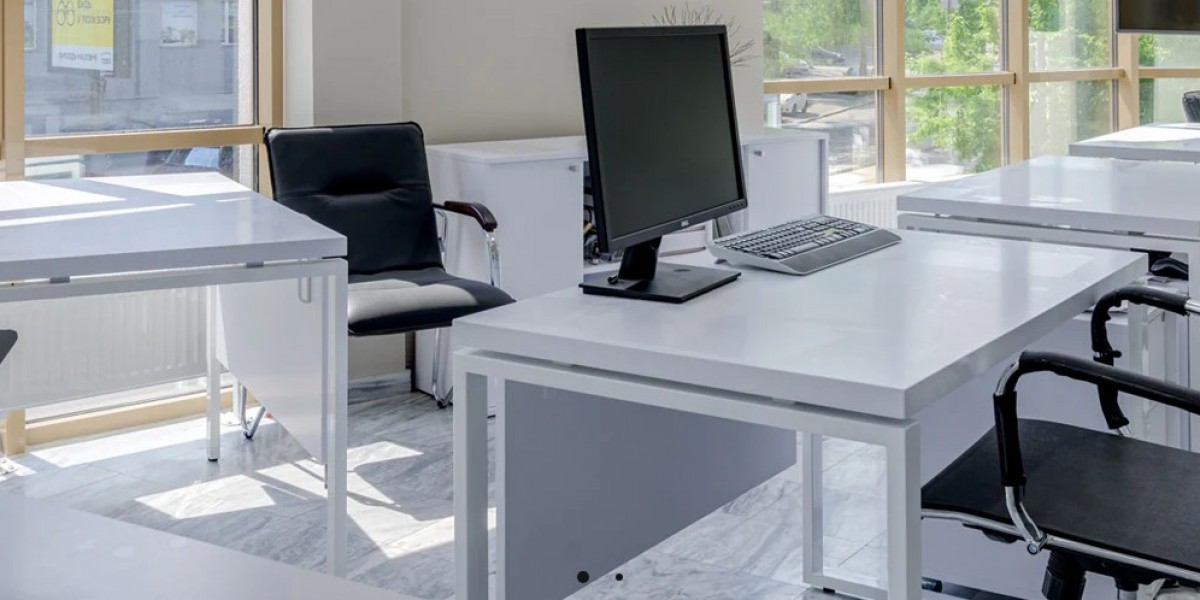Choosing the right office table is crucial for creating a productive workspace that suits your work style and enhances your efficiency. Here are some key considerations and steps to help you select the ideal office table tailored to your needs:
1. Assess Your Work Style and Needs
- Type of Work: Consider the nature of your work. Do you require a large surface area for documents, or do you primarily work on a computer?
- Daily Tasks: Identify specific tasks you perform regularly, such as writing, drawing, or using multiple monitors.
- Collaboration: Determine if you need space for meetings or collaborative work.
2. Consider Ergonomics
- Height: Ensure the table height is suitable for your posture, allowing your elbows to rest comfortably at a 90-degree angle while typing.
- Adjustability: Look for adjustable-height tables that allow you to alternate between sitting and standing positions for better health and comfort.
- Chair Compatibility: Ensure your office chair fits well with the table, providing adequate legroom and support.
3. Evaluate Space and Layout
- Room Size: Measure your office space to ensure the table fits comfortably without crowding the room.
- Room Layout: Consider the table's placement in relation to other furniture and ensure there is enough space for movement.
- Corner vs. Center: Decide if you prefer a corner desk for space efficiency or a center desk for easy accessibility.
4. Determine Storage Needs
- Built-In Storage: Look for tables with integrated drawers or shelves if you need storage for office supplies, files, or equipment.
- Separate Storage: Consider separate storage solutions, like filing cabinets or shelving units, if you prefer a minimalist table design.
5. Choose the Right Material
- Wood: Offers durability and a classic look, suitable for traditional or formal office settings.
- Metal: Provides a modern, industrial feel and is often more durable.
- Glass: Creates a sleek, contemporary look but may require more maintenance.
- Laminate: Affordable and available in various finishes, offering durability and style versatility.
6. Prioritize Functionality and Features
- Cable Management: Choose a table with built-in cable management features to keep cords organized and out of sight.
- Tech Integration: Consider tables with built-in power outlets or USB ports for easy device charging.
- Expandability: Opt for modular designs if you anticipate needing to expand your workspace in the future.
7. Match Aesthetic Preferences
- Style: Select a table that complements your office decor and personal style, whether its modern, traditional, or minimalist.
- Color and Finish: Choose colors and finishes that align with the overall design of your workspace, creating a cohesive look.
8. Set a Budget
- Determine Your Budget: Set a realistic budget based on your needs and preferences.
- Balance Cost and Quality: Invest in a table that offers durability and functionality, balancing cost with quality to ensure long-term satisfaction.
9. Consider Sustainability
- Eco-Friendly Materials: Look for tables made from sustainable materials like bamboo or reclaimed wood.
- Green Certifications: Choose tables with certifications like FSC (Forest Stewardship Council) for responsibly sourced materials.
10. Test Before Buying
- Visit Showrooms: If possible, visit a furniture showroom to test the tables comfort, height, and overall feel.
- Read Reviews: Look for customer reviews and testimonials to gain insights into the tables durability and functionality.
Conclusion
Selecting the right office table requires careful consideration of your work style, space, and preferences. By assessing your needs and evaluating key factors such as ergonomics, material, functionality, and aesthetics, you can find a table that enhances your productivity and comfort. Whether you need a minimalist desk for focused work or a large table for collaborative projects, there are options available to suit every work style and office environment.






